
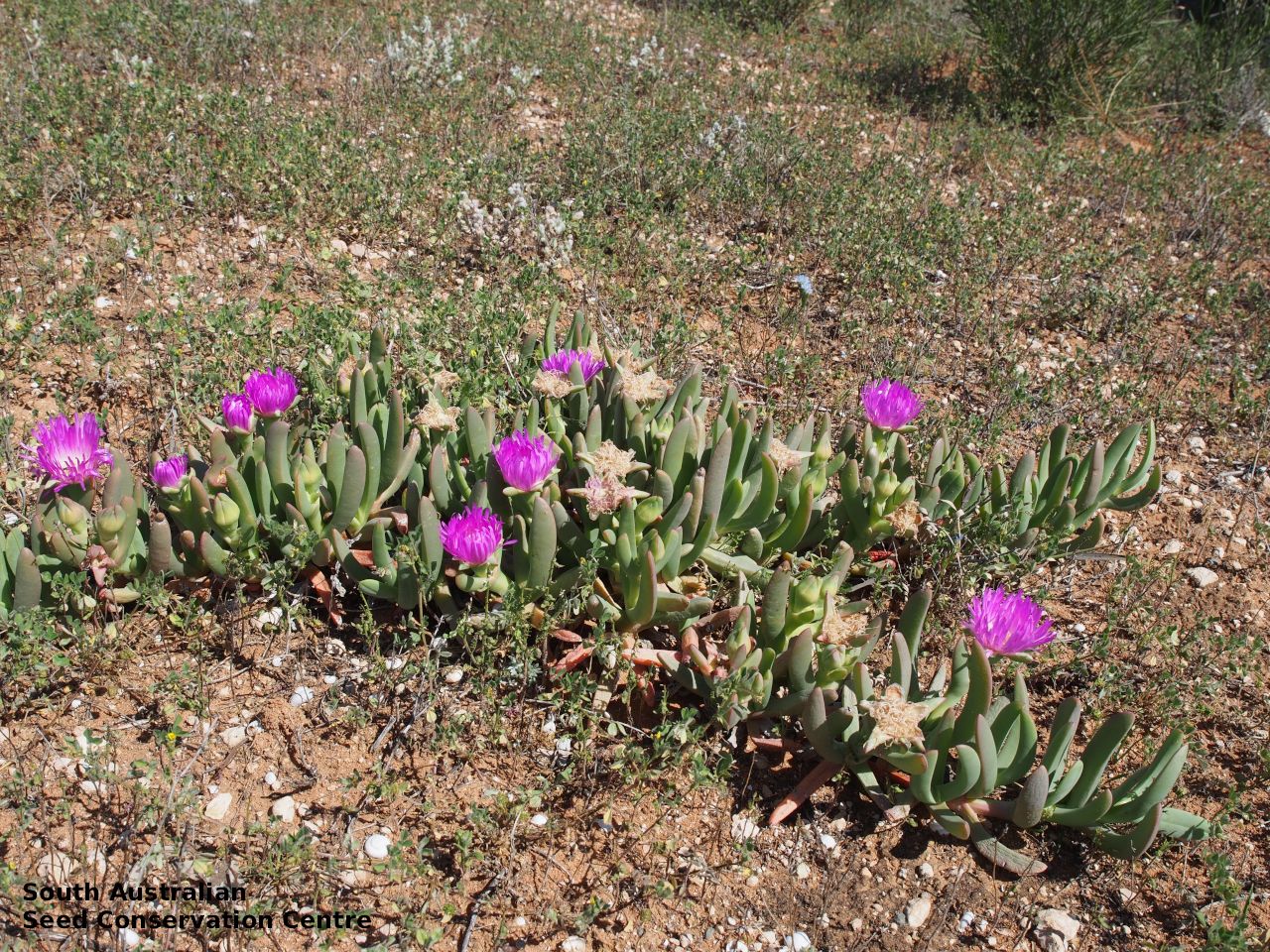
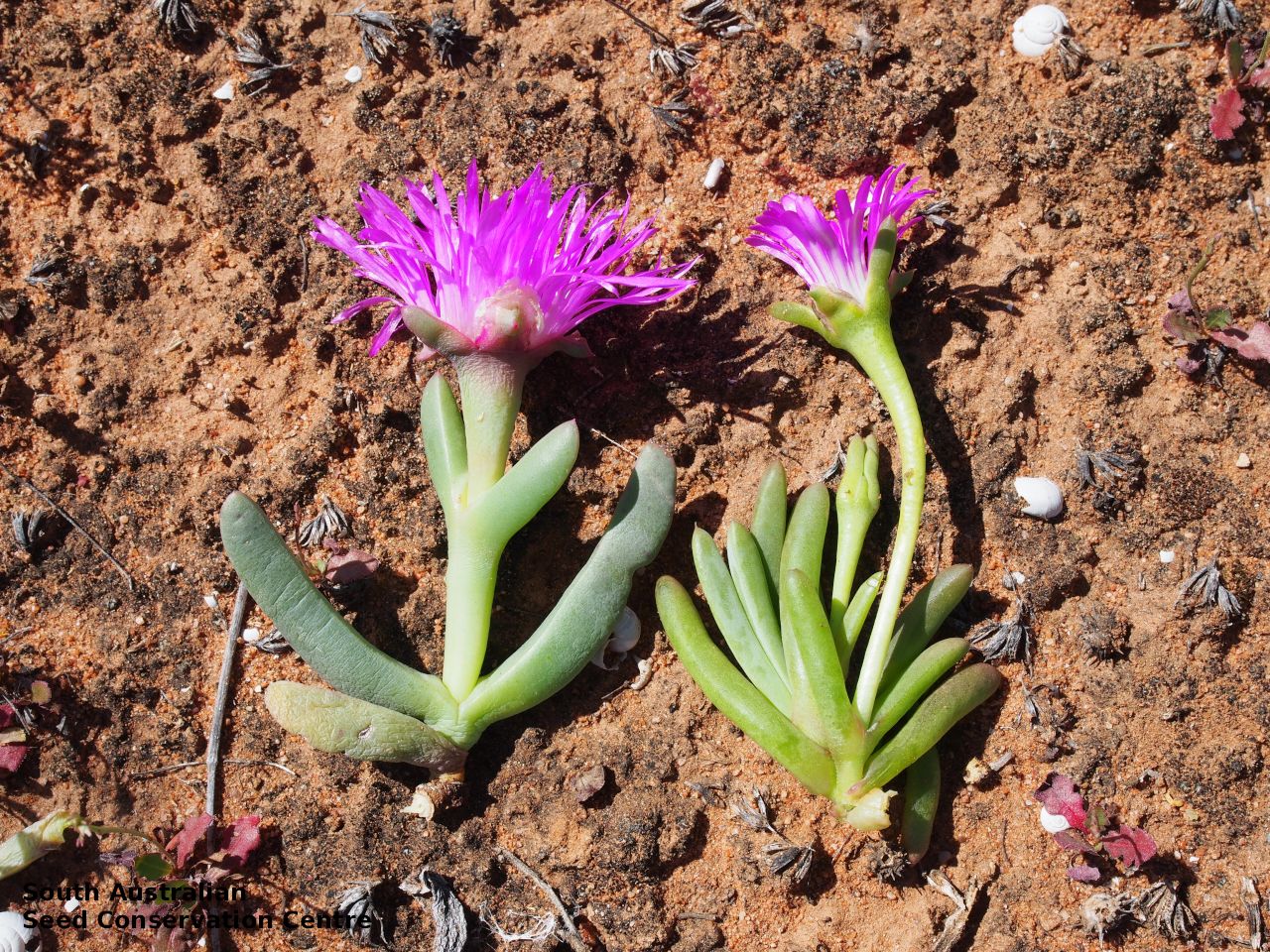
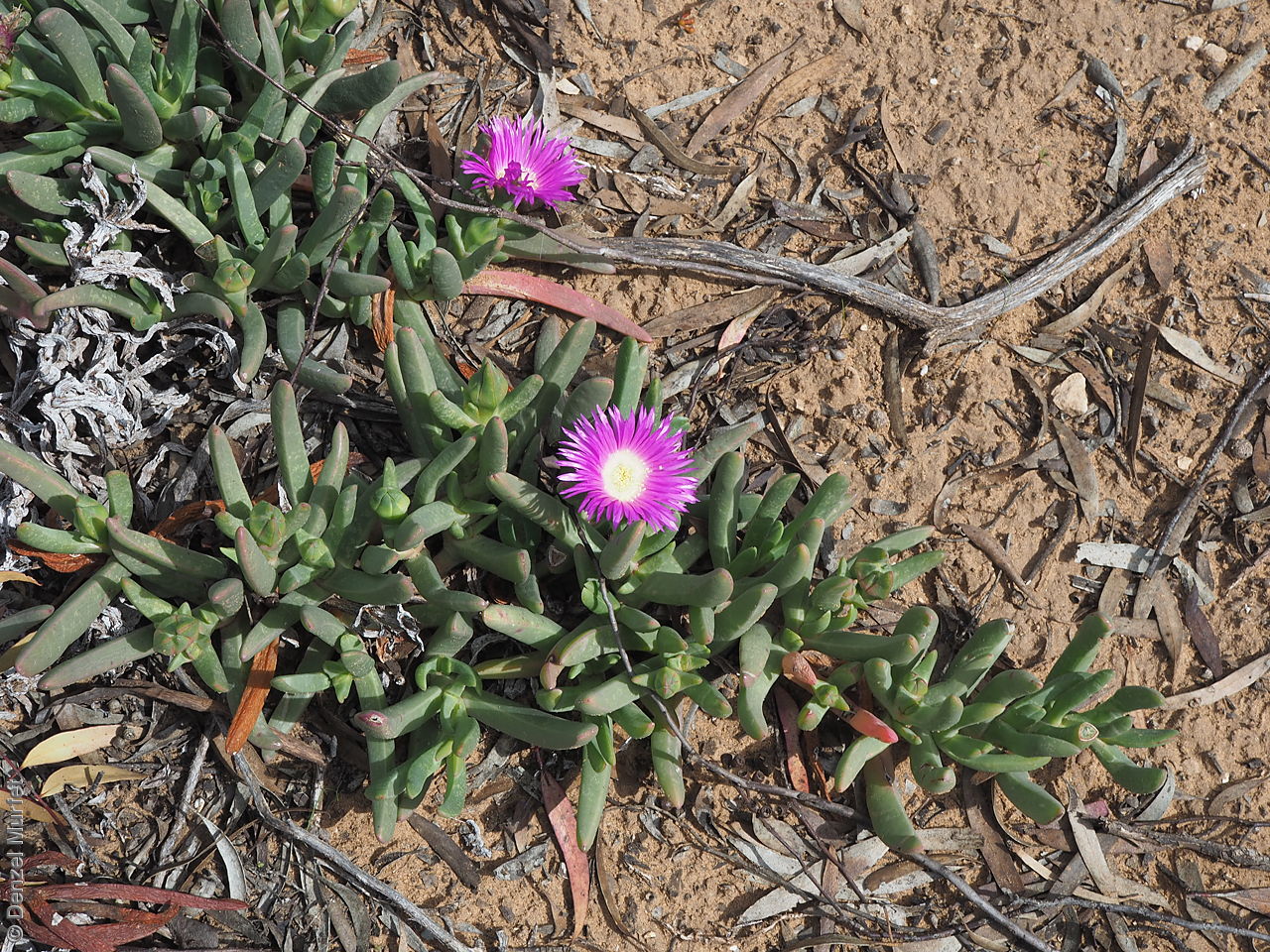
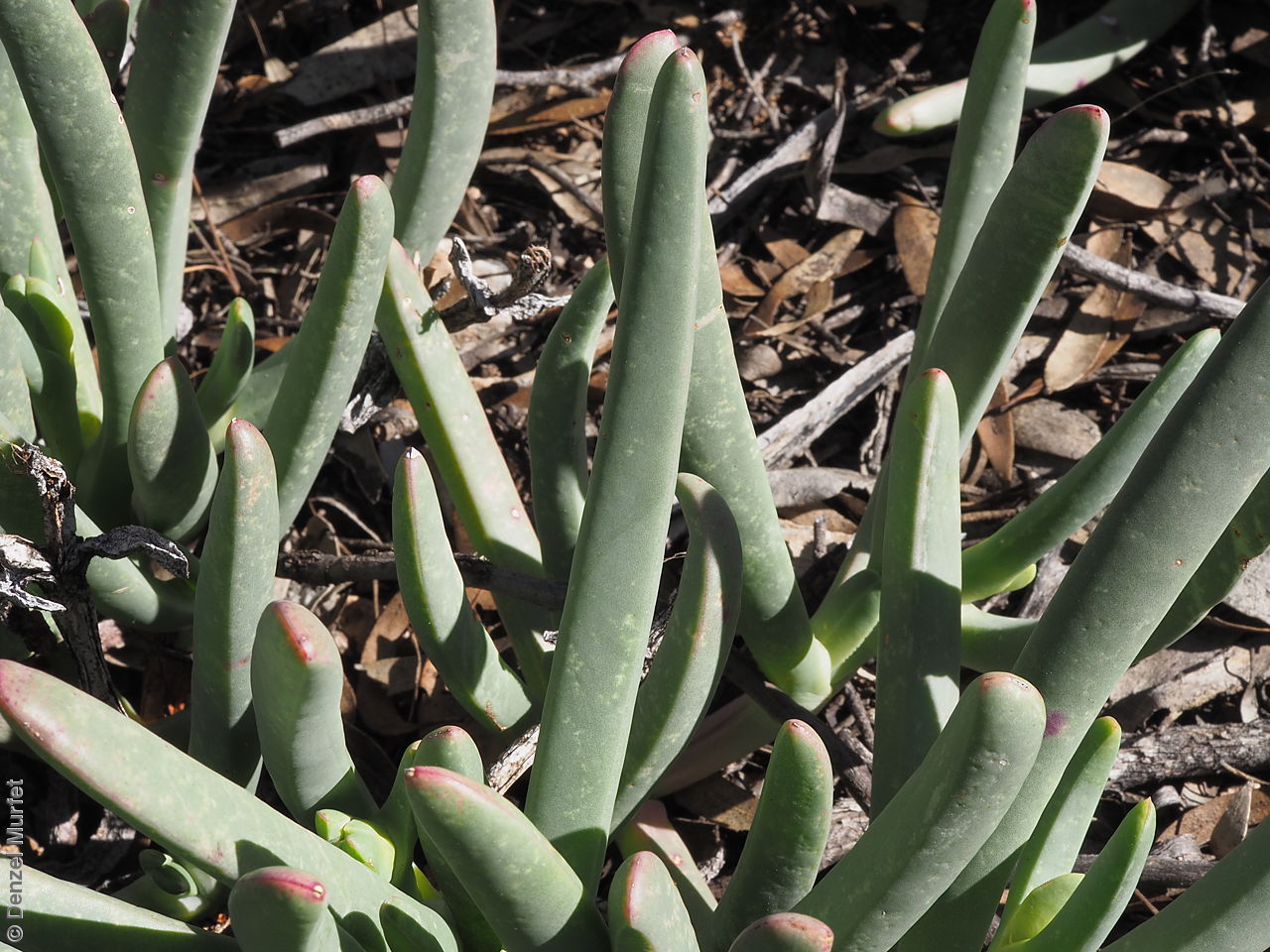

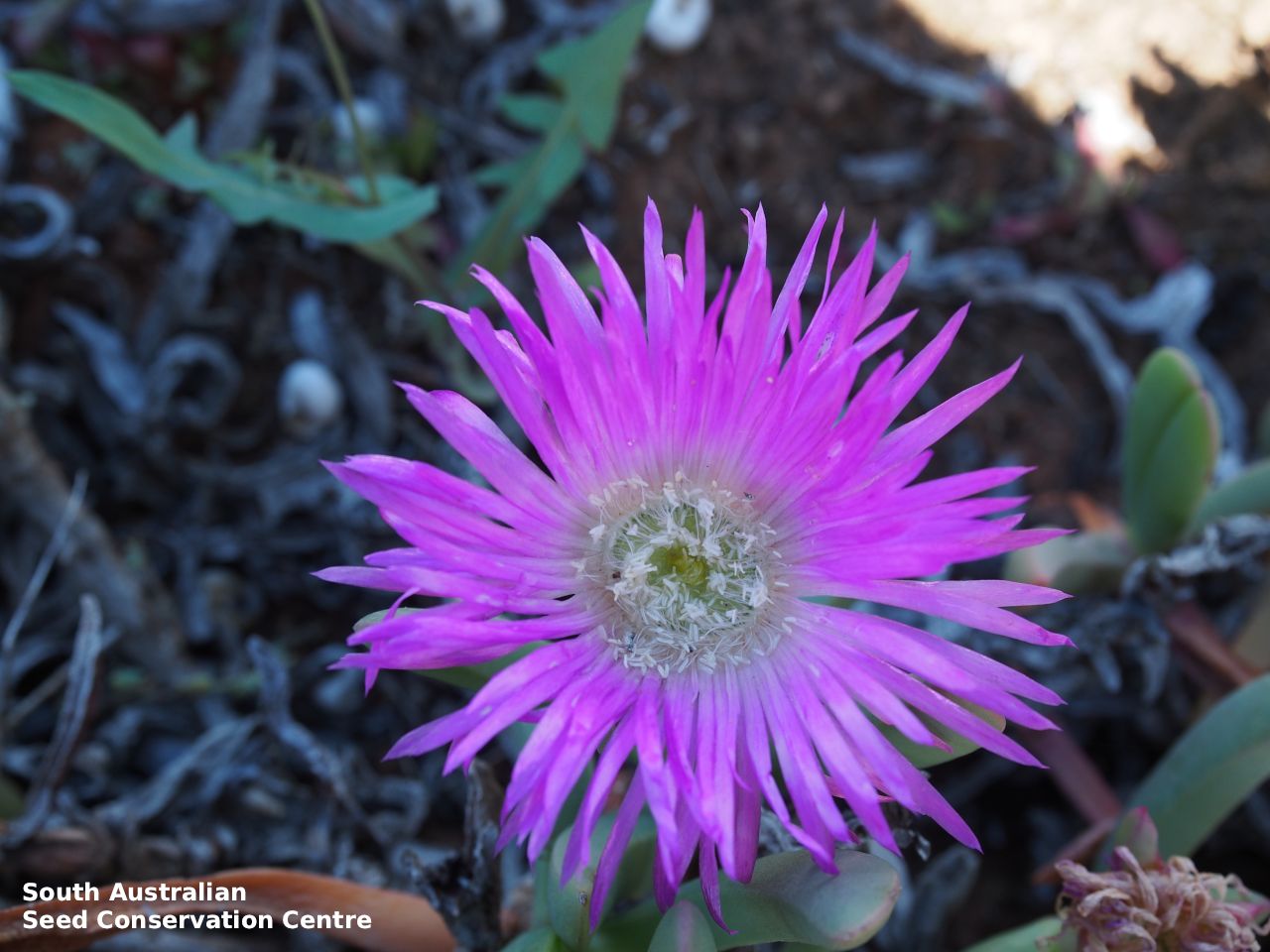
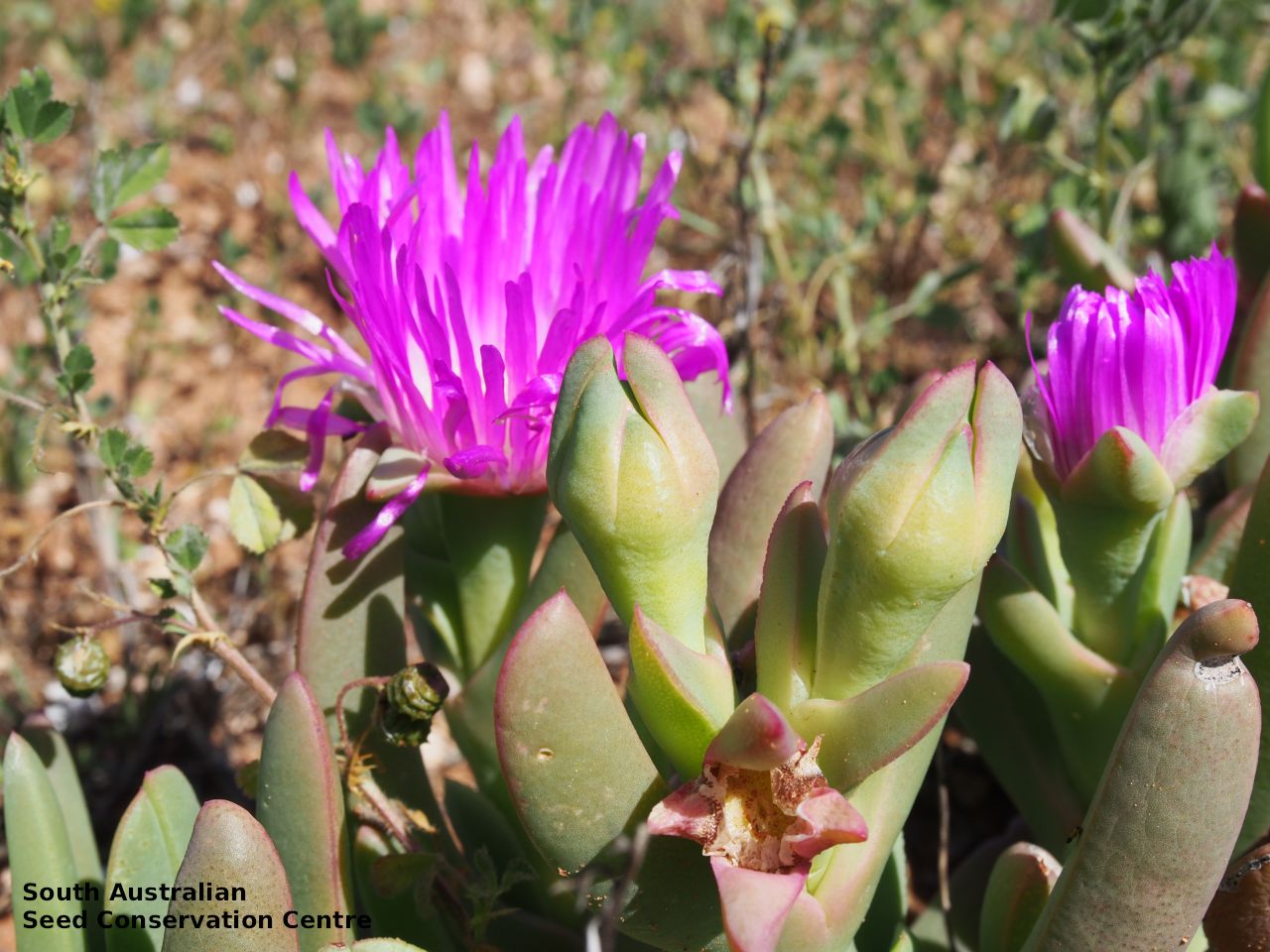
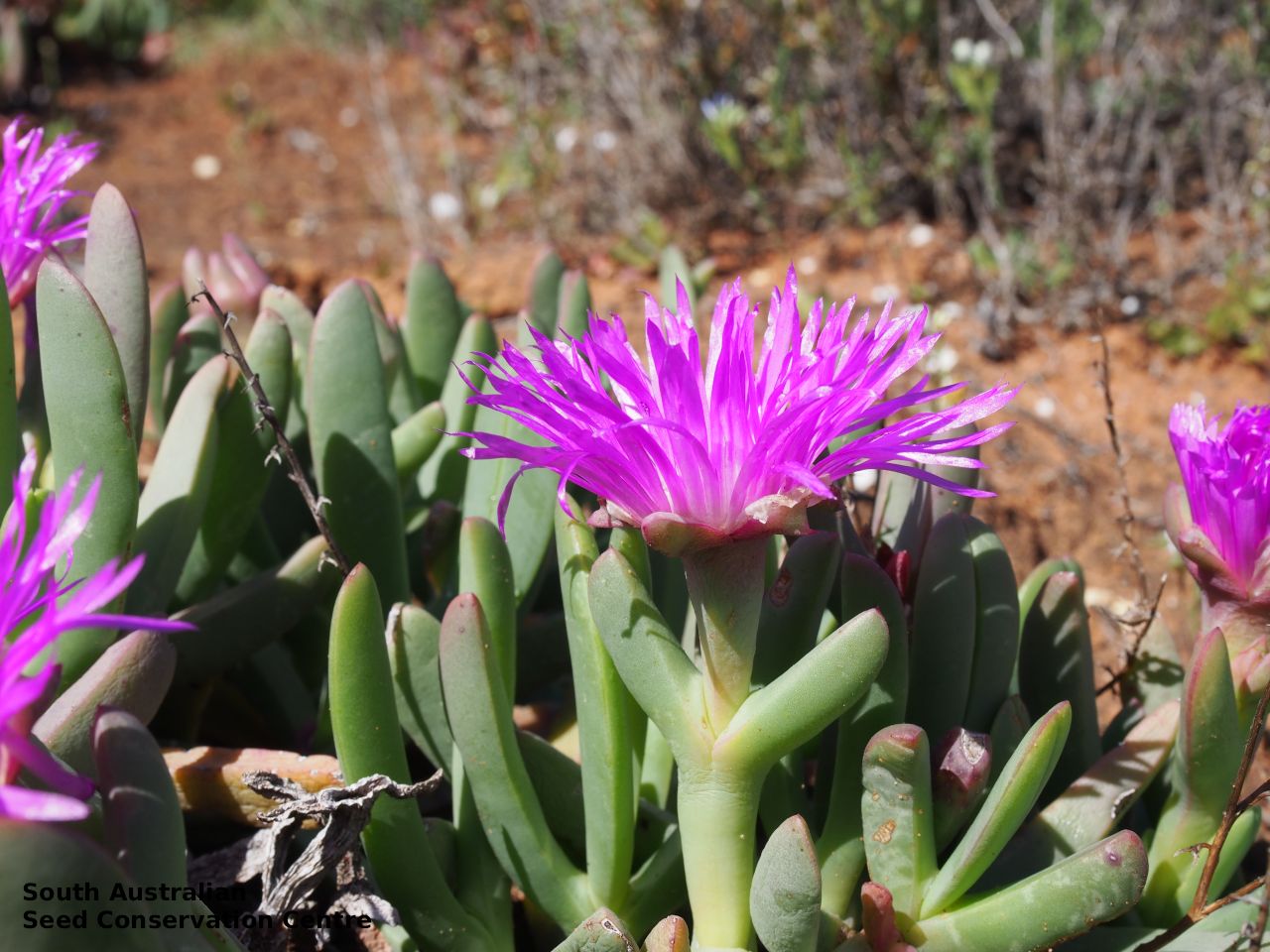
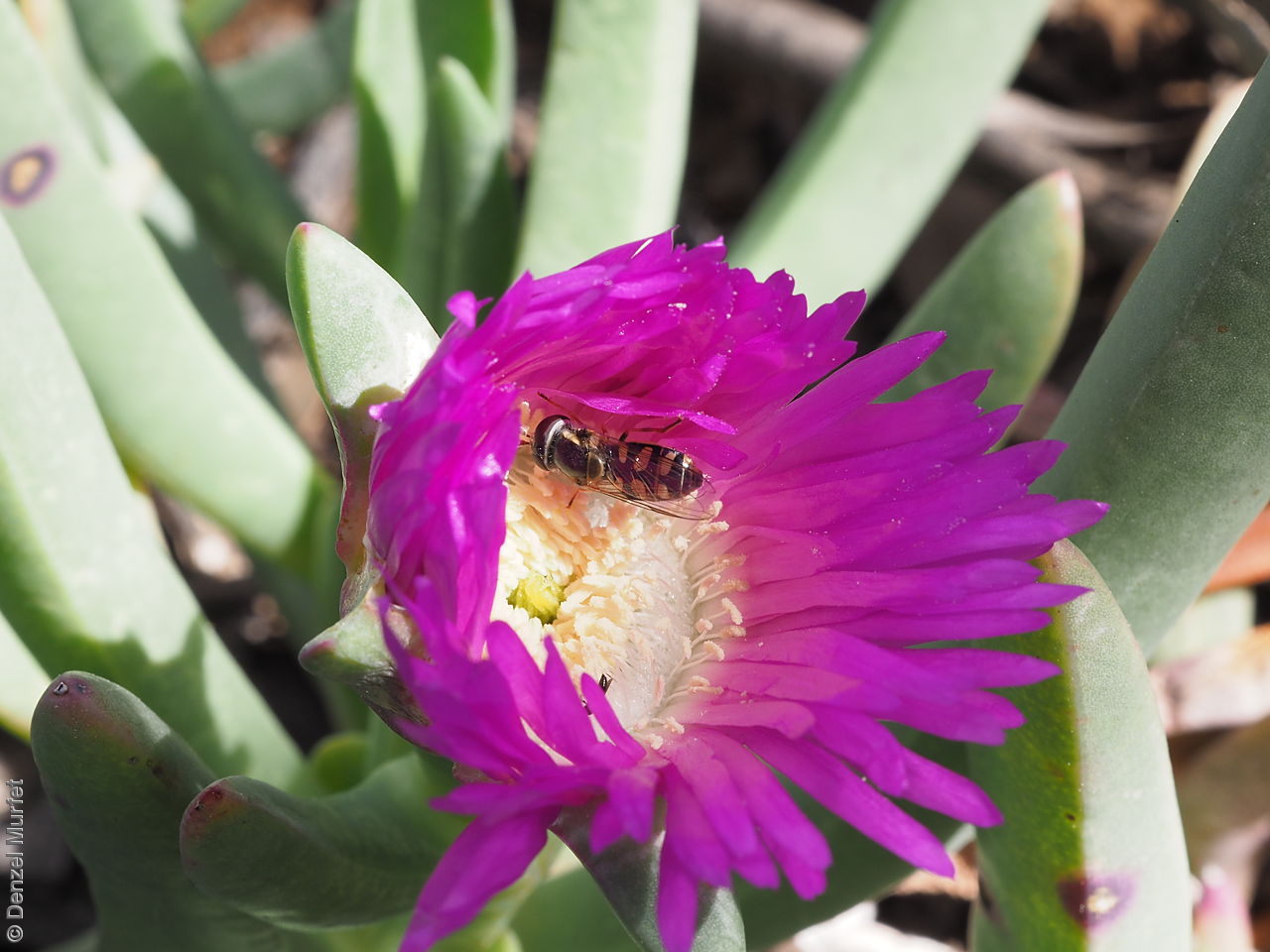
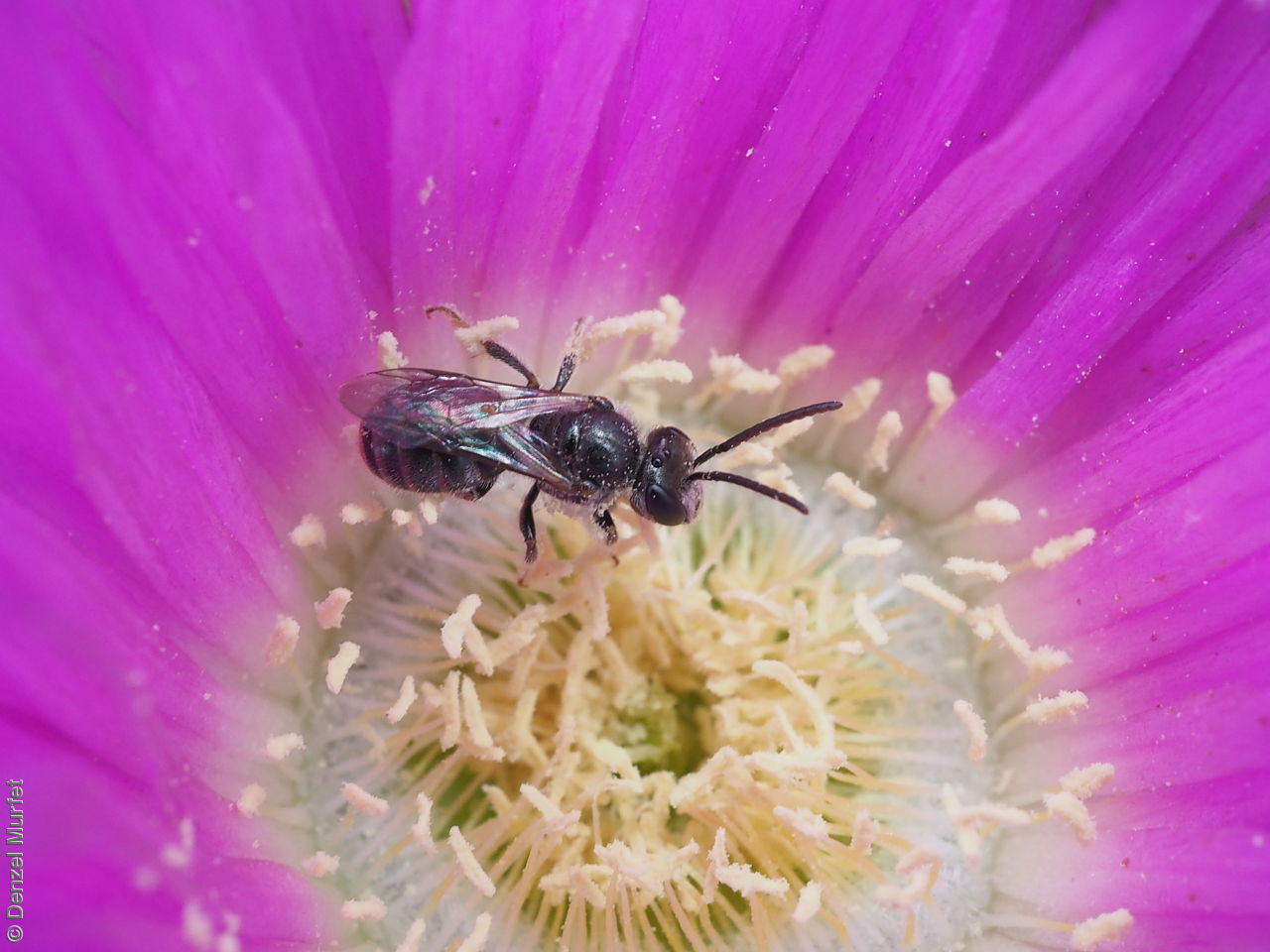

_ibra_896.png)
Common names
Lens Pig Face
Native Pigface
Karkalla
Etymology
Carpobrotus from the Greek 'karpos' meaning fruit and 'brotos' meaning edible, referring to the succulent fruit which was eaten traditionally by Aboringinal people. Short calyx is the manual script name referring to the species having a short calyx.
Distribution and status
Found inland on the Eyre Peninsula, Yorke Peninsula, Mount Lofty Ranges and the Murrayland in South Australia, growing away from the coast. Also found in Victoria. Native. Common in South Australia. Rare in Victoria.
Herbarium regions: Eyre Peninsula, Northern Lofty, Murray, Yorke Peninsula, Southern Lofty
AVH map: SA distribution map (external link)
Plant description
This species is considered the inland form of the species C. rossii, however, the full description is currently unavailable. Prostrate, succulent perennial plant with light purple flowers.
Seed collection and propagation
Collect seeds between November and January. Collect mature fruits, those that are fat and turning red with brown seeds inside. Break open the fruits and wash the content in water. Drain the liquid leaving behind the seeds. Place the wet seeds onto paper towels and leave to dry. Store the seeds with a desiccant such as dried silica beads or dry rice, in an air tight container in a cool and dry place. Seed viability is usually high. Seeds are non-dormant, viable seed should germinate readily without any treatment.